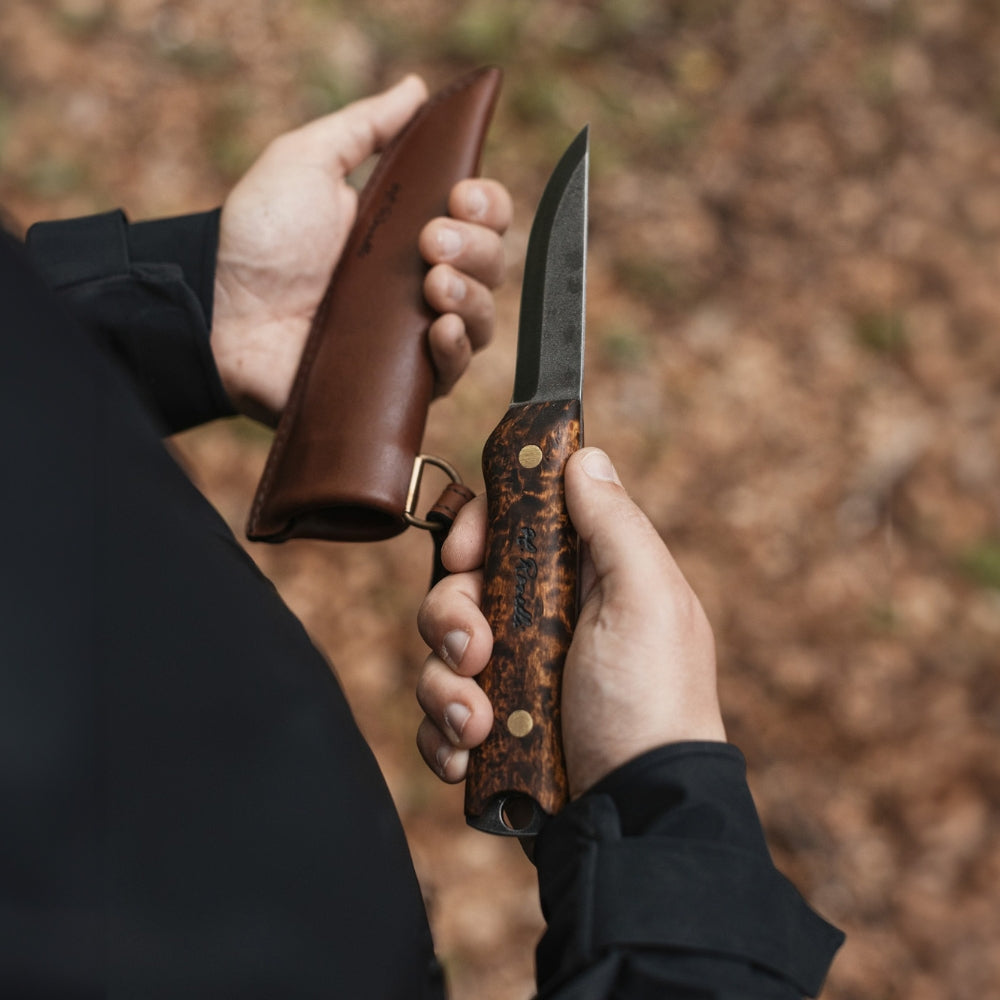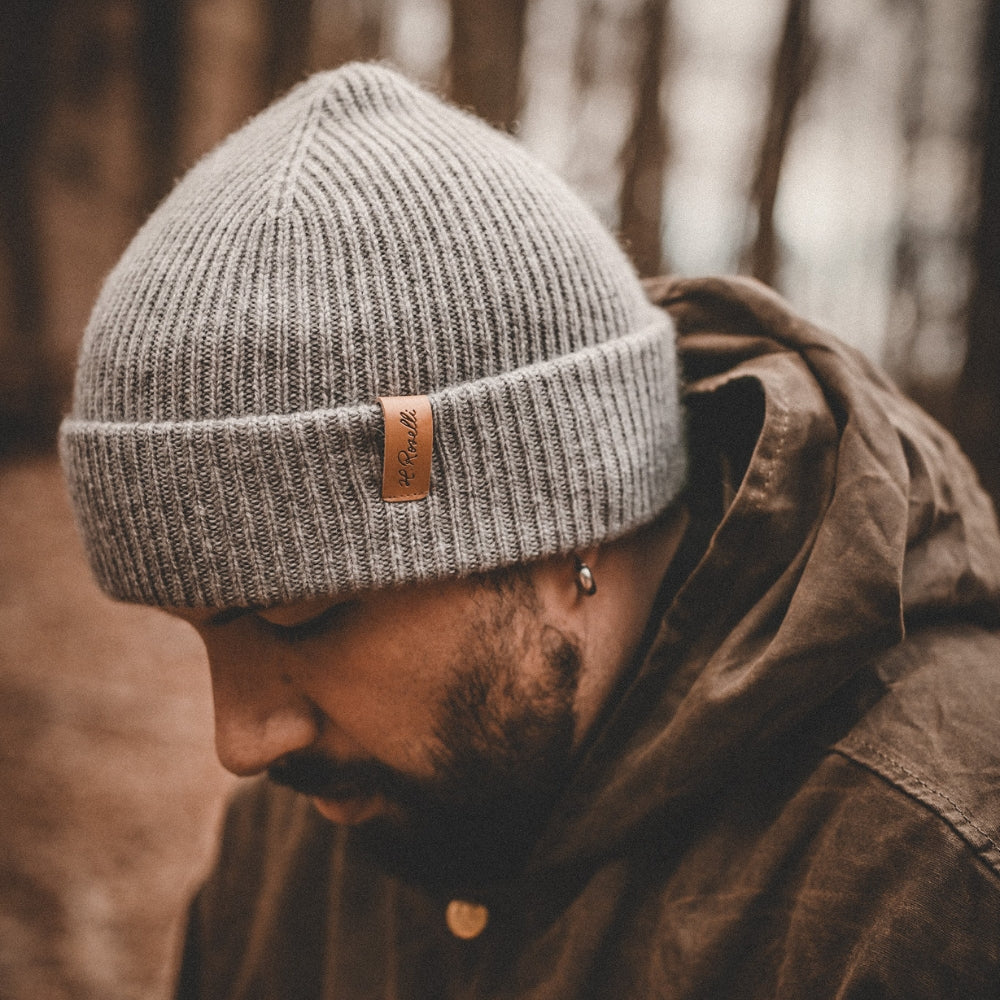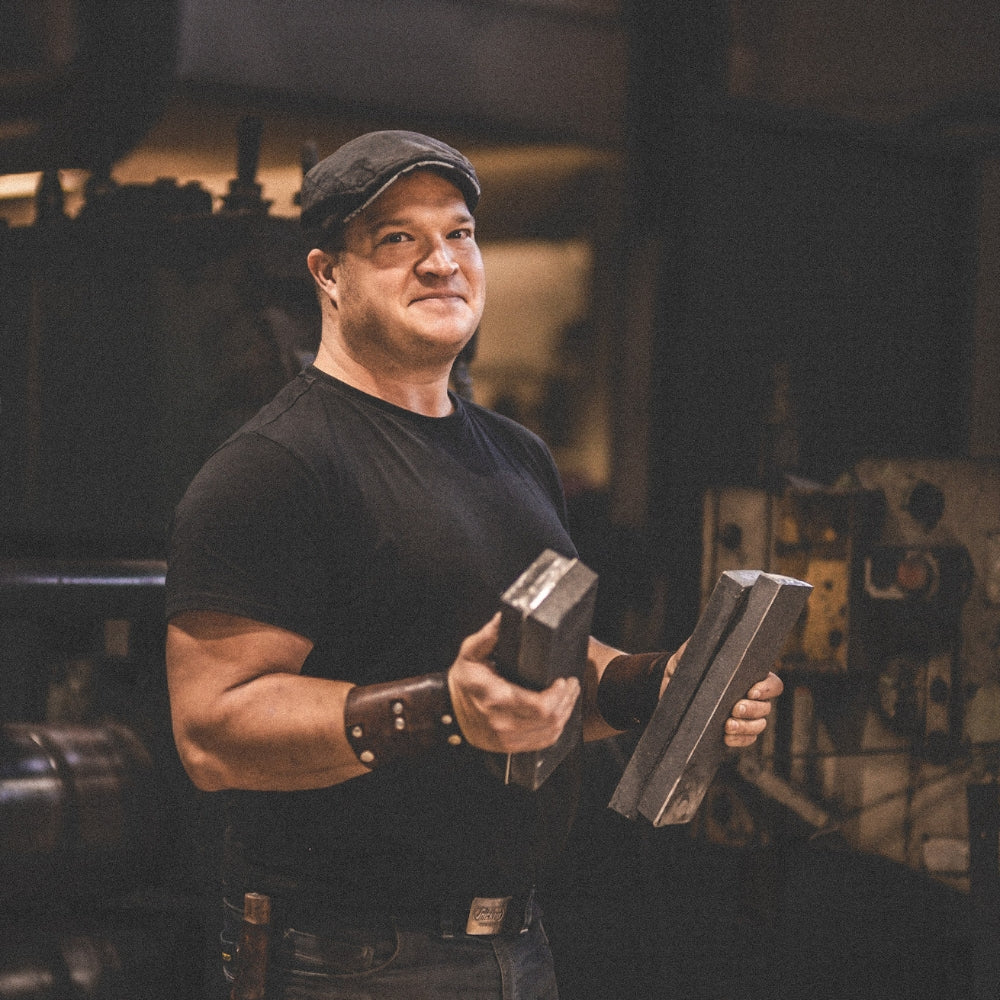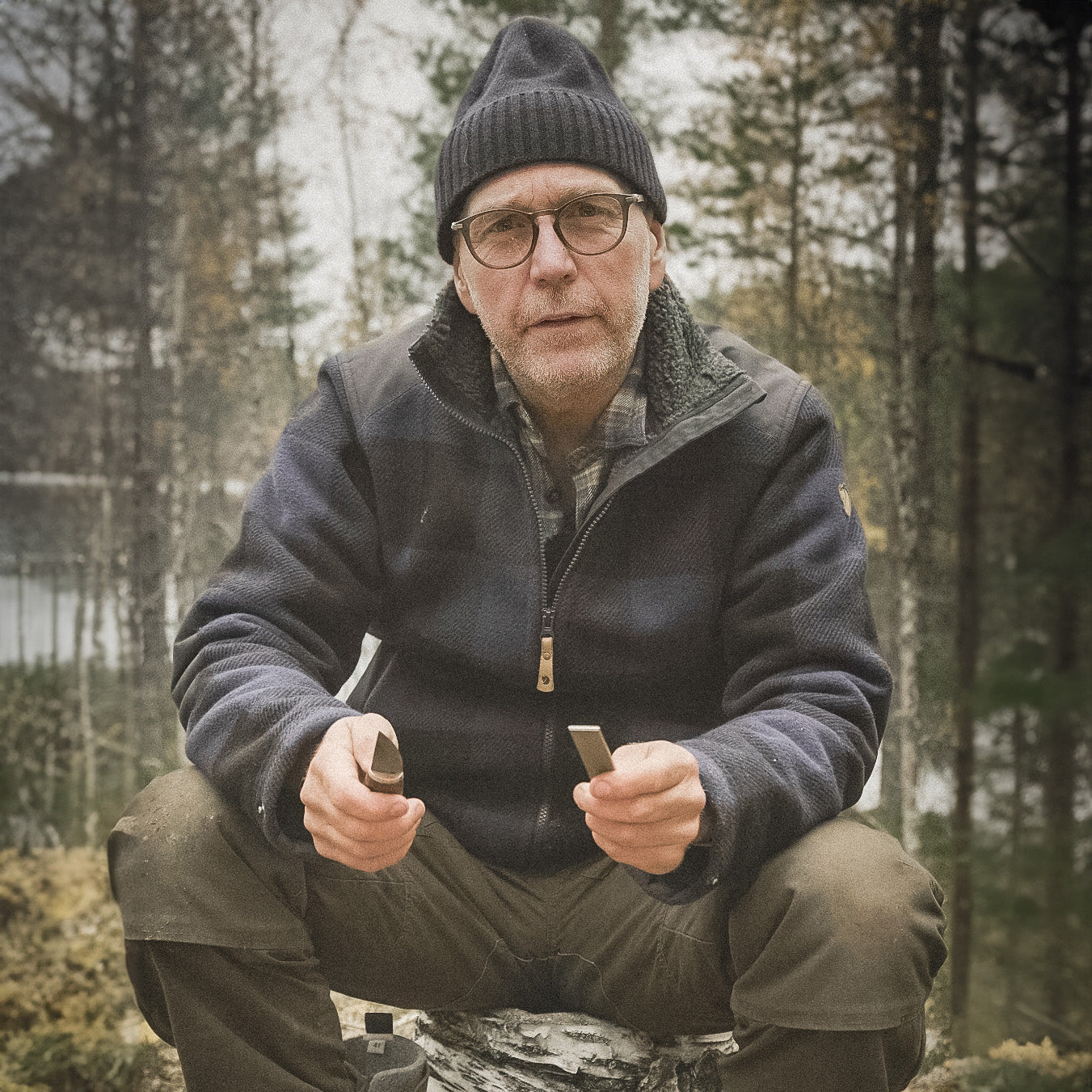Ajoittain asiakkaat palauttavat meille tuotteen, jonka terä tai kärki on vahingoittunut. Koemme tärkeäksi kertoa sinulle puukkojesi/veitsiesi oikeasta käytöstä sekä eri terästyyppejä koskevista eroista. Tässä blogikirjoituksessa selitämme pehmeän ja kovan teräksen erot sekä kunkin terästyypin ominaisuudet. Selitämme myös, mitä lohkeilu on ja miten voit korjata sen itse helposti.
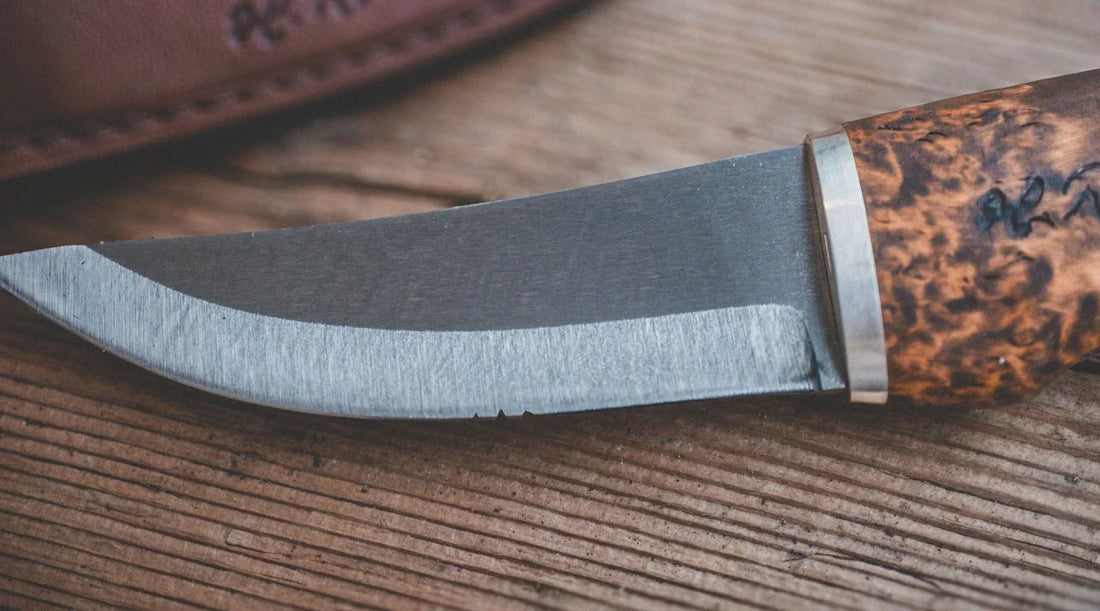
Pehmeä vs. kova teräs: mitä on lohkeilu?
Mikä on ero pehmeän ja kovan teräksen välillä?
Puukon -ja veitsenterän kovuutta mitataan kovuusmittarilla, ja tulos ilmoitetaan yksikössä HRC (Rockwell). Hyvien veitsien HRC-arvo on välillä 55–65, joten pienetkin erot HRC-luvuissa voivat vaikuttaa merkittävästi teräksen kovuuteen. Tämä ei kuitenkaan tarkoita, että pehmeä terä olisi huonompi kuin korkean HRC-arvon omaava terä. Kaikki riippuu siitä, millaisia ominaisuuksia arvostat terässäsii. Pehmeä terä, jonka HRC on 54, on helpompi teroittaa. Teroituskulma on yleensä noin 25 astetta, eikä sen tekemisestä tarvitse huolehtia täydellisesti, sillä pehmeän terän ansiosta teroituskulmaa on helppo muokata, kunnes veitsi on terävä. Matala-HRC-veitsen lopullinen terävyys ei yleensä ole yhtä suuri kuin korkean HRC-arvon omaavan veitsen, eikä sen terä pysy terävänä yhtä pitkään.
Pehmeä teräs eli vakio hiiliteräksemme: Tämä teräs sisältää noin 0,8 % hiiltä ja on tässä blogikirjoituksessa kutsuttu pehmeäksi teräkseksi, koska sen hiilipitoisuus on alhaisempi kuin kovemmassa UHC-teräksessämme (Ultra High Carbon). Esimerkiksi jos lyöt pehmeän terän kiveä vasten, tapahtuu plastista muodonmuutosta, eli teräs taipuu ja muokkautuu sen sijaan, että se lohkeaisi, kun se altistuu liian voimakkaalle vastukselle.
Kova teräs eli UHC-teräksemme: UHC-teräksemme (Ultra High Carbon) sisältää noin 1,8–2,0 % hiiltä ja on se, mitä kutsumme kovaksi teräkseksi. Rosellin UHC-terästä pidetään yhtenä maailman kestävimmistä teräslaaduista, ja näiden terien kovuus on noin 62–63 HRC. Tämä kovuus mahdollistaa äärimmäisen terävyyden sekä reunan, joka pysyy terävänä erittäin pitkään, pidempään kuin mikään perinteinen hiiliteräs.
Voit katsoa alla olevan videon nähdäksesi, miten muodonmuutokset ja lohkeilu tapahtuvat.
Minkä teräksen minun pitäisi valita?
Kaikilla puukoilla ja veitsillä on erilaiset käyttötarkoitukset. Jos olet tottunut käyttämään puukkoasi tai veistäsi raskaammissa olosuhteissa ja terävyyden säilyminen ei ole sinulle ensisijaisen tärkeää, suosittelemme valitsemaan Rosellin vakio hiiliteräsveitsen pehmeämmällä terällä. Jos taas haluat erittäin terävän veitsen, joka pysyy terävänä pitkään mutta vaatii hieman enemmän huolenpitoa ja varovaisuutta, kannattaa ehdottomasti harkita Rosellin UHC-teräsveistä (Ultra High Carbon Steel).
